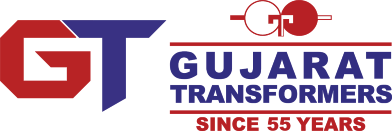
A cast resin dry-type transformer is used in different commercial, industrial, and utility applications, as they come with various benefits. The advancements in this transformer have technologically made electrical devices efficient and compliant over the years.
Initially, these transformers were set up to be created in the city of Vadodara of Gujarat over 55 years back. The company flourished as it expanded with experiments directed at the invention of new and better transformers.
More about cast resin dry-type transformers are given below:
A cast resin dry transformer doesn’t require insulating liquid when its core (winding) is penetrated in a solution. These are kept in a sealed tank under air pressure.
Advantages
- These are the main benefits of using a cast resin dry type transformer:
- Easy installation technique
- Quick maintenance and pollution-free design
- Safe
- Low side clearance
- Environment-friendly
- Supports overloads excellently
- Affordable for fire protection and civil installation systems
- Resistant to short circuits, low dielectric heating
- Works well in moisture
Disadvantages
There are some catches with the installation of a cast resin dry type transformer:
- Once the winding fails, the setup changes the voltage with the limb.
- As compared to the oil-cooled transformer, these are a bit expensive.
Applications
These transformers are primarily found in:
- Forests
- Substations in the city
- Gas, oil, and chemical industries
- Environmentally challenged areas
- Underground substations
- Renewable energy generation lands.
Design factors for cast resin dry type transformers
There are specific parameters for the design of this type of transformer:
- Insulation type – F and H types of insulation are primarily used for the primary and secondary winding due to temperature management, thermal shock resistance, and dielectric strength.
- Winding Material – Windings made with copper or aluminum varied with the current rating requirement.
- Core material and Hysteresis Loss – silicon steel is generally used to supply high permeability and minimum hysteresis.
- Regulation – is achieved with a leak resistance of <2% in the design.
- Life – depends on the winding insulation breakdown with the effect of temperature rise due to overload.
- Losses – for the eddy current and core loss to be independent, leakage and winding resistance should stay within moderation with voltage regulation to ensure high efficiency.
- Overload – it results in overheating, which limits the loading demand. A fan-cooling system is added to the dry-type transformer to avoid this problem.
- The insulation level is chosen according to the primary impulse level, and the system adds to the transformer’s life.
- K-factor – withstands the non-sinusoidal heat generation in the winding. Harmonics in the transformers are added to alter this issue.
Conclusion
Many sectors are working to simplify the needs of our lives; cast resin dry-type transformers are crucial. With such a large capacity, many fundamental and easy procedures ensure electricity usage maintenance, which is covered by transformers. The cast resin dry type transformers have components that ascertain their operation accordingly. These cater to the coverage required for medium-range voltages, air-cooled energy transformation, and simple maintenance.


